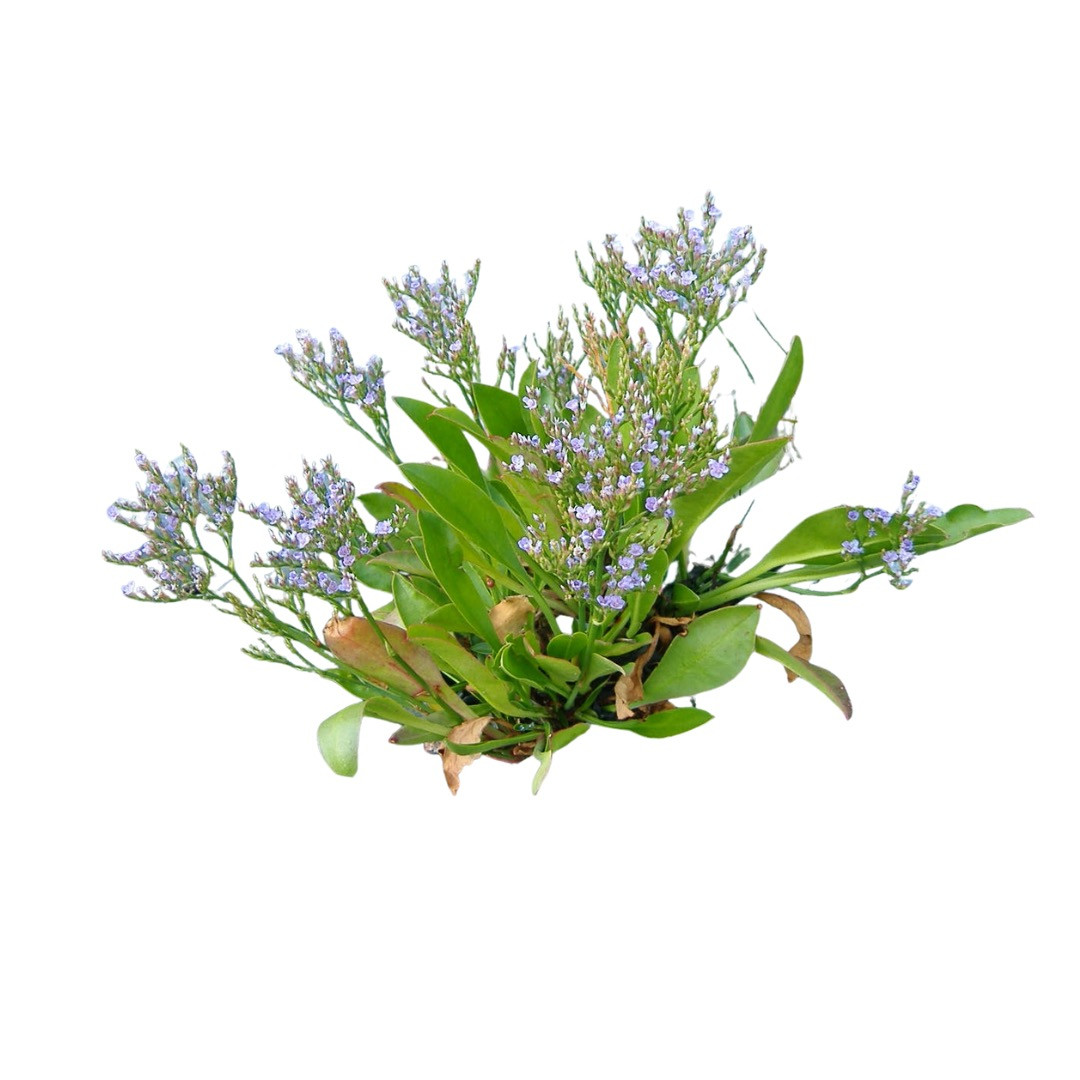Sea-lavender

Sea-lavender
Limonium
Plant family
Leadwort family (Plumbaginaceae)
Also known as
Statice, Caspia, Marsh-Rosemary
Season Overview
Propagating
Planting
Harvest
Harvest
J
F
M
A
M
J
J
A
S
O
N
D
1ST YEAR
FOLLOWING YEARS
Details
Light requirement
Sunny
Water requirement
Dry
Soil
Light (sandy)
Nutrient requirement
Medium
Plant distance
30 cm
Row spacing
30 cm
Seeding depth
2 cm
Instructions
Description
The beach lilac, sea lavender or repulse, belongs to the family of plumbaginaceae. There are about 300-350 species worldwide. Most of the herbaceous species are perennial, rarely growing as a semi-shrub. They grow up to 1 m/1.1 yd tall. The flowers are found in white to lavender and yellow. They are often salt plants (halophytes) and often grow along coasts. They are used as ornamental, cut and dried flowers, rarely for food or medicinal purposes.
Origin:
Worldwide
Growing tips
In cold frames or in trays from March, sow 2-3 grains each in small pots, when sowing depth pay attention to the note on the seed bag - differences in species and varieties, and keep moist. Do not cultivate too warm. Germination at after about 2 weeks. Cut flowers in dry weather just before fading, dry in an airy and dark place. Divide and thin out every 2-3 years. Propagate by sowing, root cuttings and division. Most species are hardy.
Companion Plants
Antagonistic Plants
No antagonistic plants
Diseases
Root Rot
Pests
Land snails